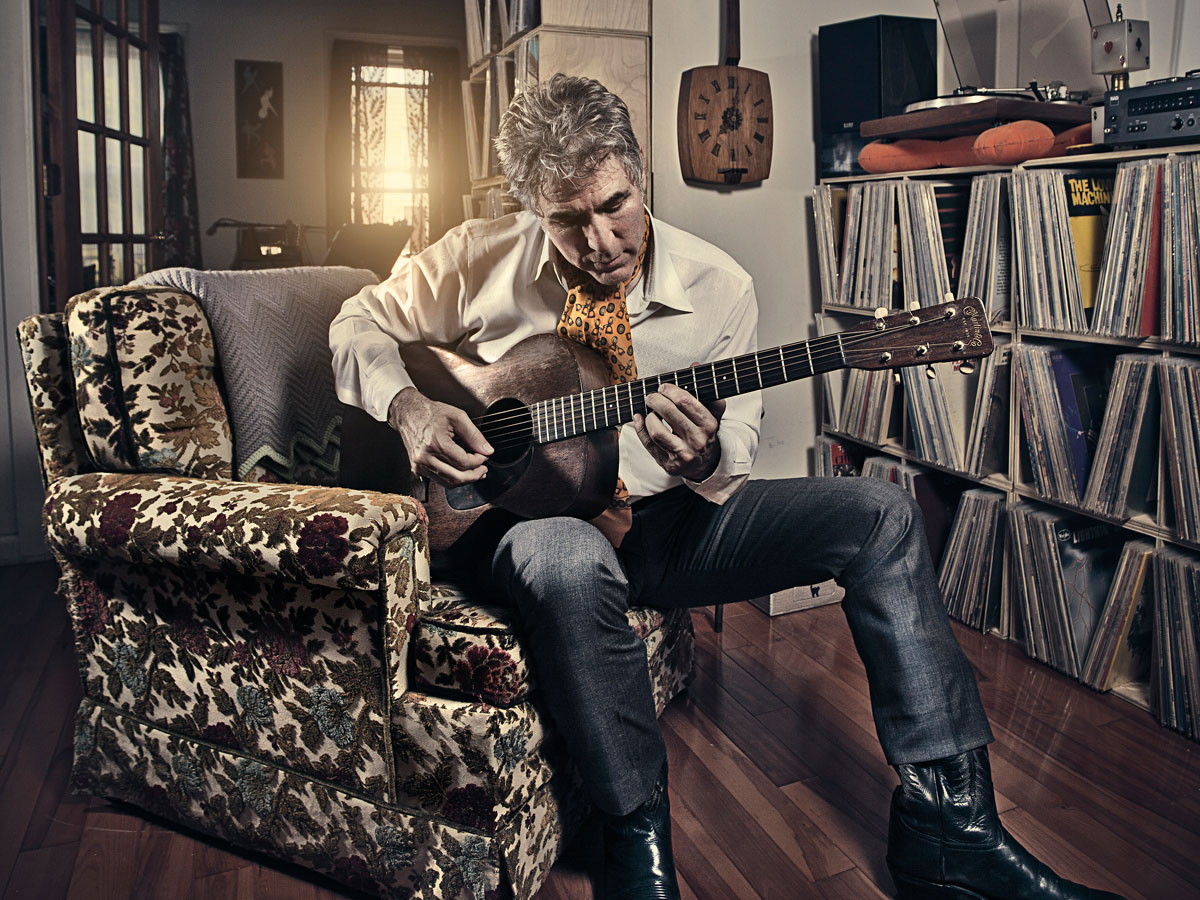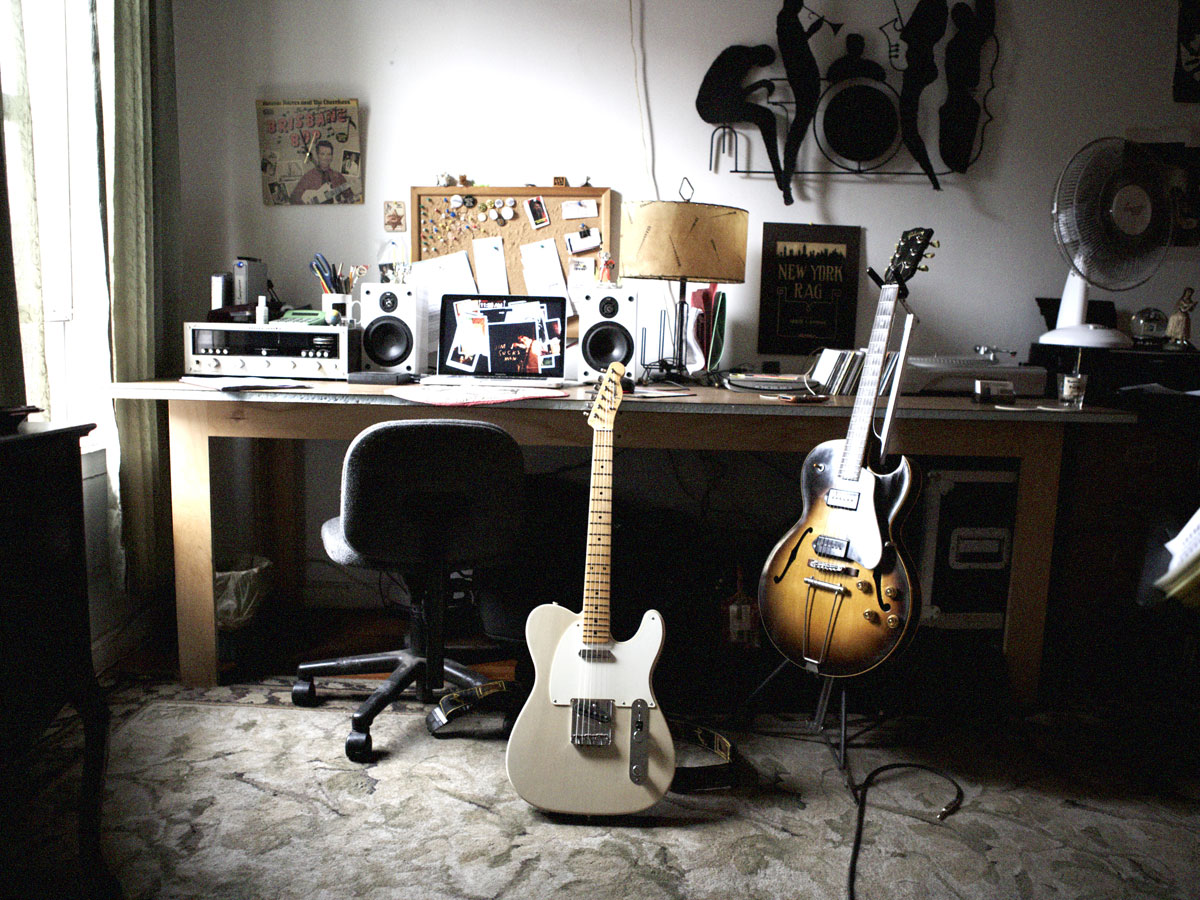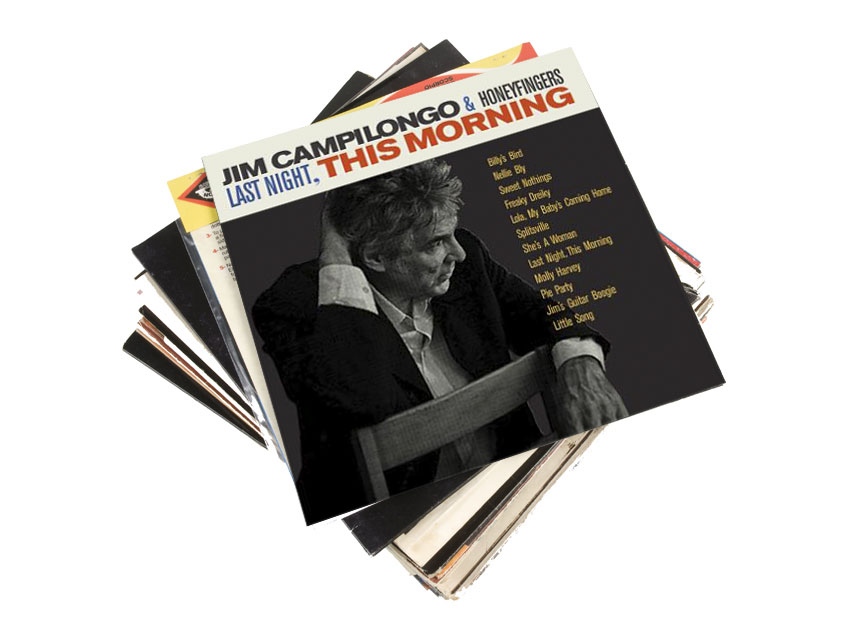
The sessions
New York’s premier Tele-meister gives us the inside story on recording with Western Swing outfit Honeyfingers...
The sessions
“I love country music that’s based on the principles of Bach: I mean a Buck Owens ballad, or the Texas Troubadours. It’s just beautiful. And a couple of years ago, I went to see Honeyfingers and I was knocked out by how great they were - they were doing music that I thought that only I knew!
"Luca Benedetti [Honeyfingers guitarist] was just a wealth of ideas, and the rehearsals for this record were so much fun"
“And not doing a ‘historical’ presentation of it, either - there was kind of a newer vibe to it, where people were being themselves but still adhering to the importance of the melodies and the harmonies and the right groove and so on.
“Luca Benedetti [Honeyfingers guitarist] was just a wealth of ideas, and the rehearsals for this record were so much fun. We had this regular gig at a vodka distillery, in the lobby where people wait to go on tours and drink. But we got paid a tiny bit and there was an audience and we’d do it every week.
“And we really pushed it: we’d do a song three times in a row, we’d stop in the middle and go, ‘Hey, maybe you ought to go up a third...’ So, we ended up basically rehearsing a lot together and so when we did go into the studio, it was 99 per cent live, because of that.
“We recorded it at The Bunker Studio in Brooklyn, which is a great studio a few blocks from where I live. It was a great room and I had eye contact with everybody - I felt like we were playing together.
“Some of the things I played I wish were better - and yet they were live, and they had a great energy that was of-the-moment. So because the engineer, Aaron Nevezie, was so proficient and the session had such a great vibe, I kept 99 per cent of my stuff, although initially I had no intention of doing so.”
The Guitars
“Basically, I played my ’59 Telecaster through a Silverface Princeton Reverb, and because I thought that I was gonna end up overdubbing things later, that was it. I never thought I was gonna bring, like, 40 guitars, because that isn’t my style - but that was it.
"I always get a direct line out of the original sound and put it through an amp that I’d probably never play through"
“So we spent some time on my sound and, as usual, we mic’d the back of the amp and the front of the amp and I got the amp in a good space. It wasn’t in a closet, it was in a nice-sized room, so there was also a room mic. Afterwards, when we mixed the album I re-amped it, which I always do.
“I always get a direct line out of the original sound and put it through an amp that I’d probably never play through: some big old, heavy amp. I think it was a Fender Super [an 18-watt, 6L6-equipped evolution of the Dual Professional model]. And so we’d add a touch of that if we needed it.”

The Tones
“The Silverface Princetons are cheaper but the classic Princeton Reverb sound, for me, is a Blackface with a 60s Jensen goldback speaker, specifically the C-10N.
“I almost hate to mention that because they’re getting so expensive! The more advanced the speaker alphabet as in Q versus N, the less wattage capacity [efficiency] it had, so the C-10N is a really robust speaker. But the Q sounds good, too.
"I’d always go for the Silverface, although I’m not enthralled by those blue-back speakers, so I actually put Celestions in"
“For affordability, I’d always go for the Silverface, although I’m not enthralled by those blue-back speakers, so I actually put Celestions in and I bias them really hot, so it’s like a different amp.
“It’s more overdriven - I’ve used Silverfaces set up like that on Dream Dictionary and Orange. And you can really hear it on Blues For Roy. On American Hips and the others I used the Blackface, and it’s a little bit more of a traditional sound. It’s funny, about a month and a half ago, I switched back to the Blackface and I’m kinda enjoying the intimacy of it.”
The Mix
“We mixed 15 tunes in four days and I always pretend I can do that - but then it takes, like, one day to do 90 per cent of one song!
"But Aaron Nevezie, the engineer, is a guitarist and he was really musically educated"
“But Aaron Nevezie, the engineer, is a guitarist and he was really musically educated, so I could say, hey, at the end of the ‘B’ section when the diminished lines comes in... and he’d be like, ‘Yeah, I’m there.’
“There was no translating to do. Not that I was there like Nelson Ridell going like, ‘On bar 152...’ [laughs]. But in the past, I’ve been frustrated by engineers who didn’t know what I meant when I said, ‘That part where it goes to the minor chord’. So mixing went quickly, too. It was great.”

The Lessons
“At first, I actually wasn’t sure if I should make this album, because it was a bit of a departure.
"I didn’t know what to expect. But now I’m super-happy with it"
“But then I thought of Bill Frisell, who I have a lot of respect for, and how he’s always doing something different, so I like that - and this is my 11th record.
“But then I thought, ‘I don’t know, jeez it’s gonna be strange - there’s so many soloists,’ and I didn’t know what to expect. But now I’m super-happy with it.”
The Verdict
“I really have enjoyed the project - it was easy, it was fun, there was humour and commitment - everyone really cared. And I’d say I’ve listened to this record more than any record I’ve ever made, which I rarely do with my own music.
"One of my favourite parts of the record is a tune called Splitsville and I play a pretty good solo"
“There are a few things we did that are about as pretty as anything I’ve ever done. Sweet Nothings, for example, is a really nice song. I couldn’t have done that as a trio. And I loved what Luca played, what Gianni played and what Roy played.
“One of my favourite parts of the record is a tune called Splitsville and I play a pretty good solo and then Roy does this solo on gut-string and it’s just great! I’m kinda like waiting for my solo to end so I could hear his!”
Last Night, This Morning by Jim Campilongo & Honeyfingers is out now on iTunes and Amazon.
Guitarist is the longest established UK guitar magazine, offering gear reviews, artist interviews, techniques lessons and loads more, in print, on tablet and on smartphones
Digital: http://bit.ly/GuitaristiOS
If you love guitars, you'll love Guitarist. Find us in print, on Newsstand for iPad, iPhone and other digital readers


